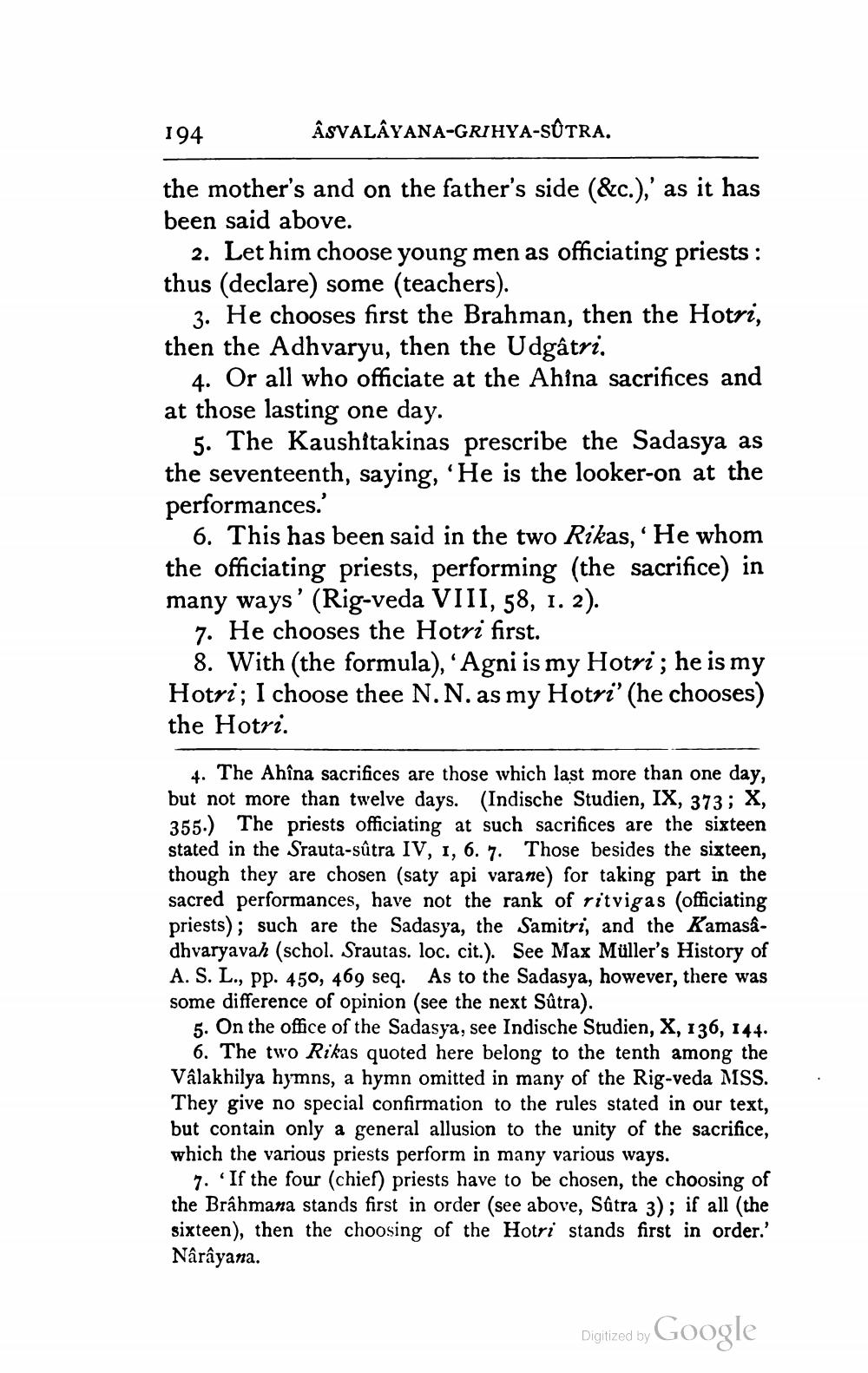________________
ASVALÂYANA-GRIHYA-SUTRA.
194
the mother's and on the father's side (&c.),' as it has been said above.
2. Let him choose young men as officiating priests: thus (declare) some (teachers).
3. He chooses first the Brahman, then the Hotri, then the Adhvaryu, then the Udgâtri.
4. Or all who officiate at the Ahina sacrifices and at those lasting one day.
5. The Kaushitakinas prescribe the Sadasya as the seventeenth, saying, 'He is the looker-on at the performances.'
6. This has been said in the two Rikas, ' He whom the officiating priests, performing (the sacrifice) in many ways' (Rig-veda VIII, 58, 1. 2).
7. He chooses the Hotri first.
8. With (the formula), 'Agni is my Hotri; he is my Hotri; I choose thee N. N. as my Hotri' (he chooses) the Hotri.
4. The Ahîna sacrifices are those which last more than one day, but not more than twelve days. (Indische Studien, IX, 373; X, 355.) The priests officiating at such sacrifices are the sixteen stated in the Srauta-sûtra IV, 1, 6. 7. Those besides the sixteen, though they are chosen (saty api varane) for taking part in the sacred performances, have not the rank of ritvigas (officiating priests); such are the Sadasya, the Samitri, and the Kamasâdhvaryavah (schol. Srautas. loc. cit.). See Max Müller's History of A. S. L., pp. 450, 469 seq. As to the Sadasya, however, there was some difference of opinion (see the next Sûtra).
5. On the office of the Sadasya, see Indische Studien, X, 136, 144. 6. The two Rikas quoted here belong to the tenth among the Vâlakhilya hymns, a hymn omitted in many of the Rig-veda MSS. They give no special confirmation to the rules stated in our text, but contain only a general allusion to the unity of the sacrifice, which the various priests perform in many various ways.
7. If the four (chief) priests have to be chosen, the choosing of the Brahmana stands first in order (see above, Sutra 3); if all (the sixteen), then the choosing of the Hotri stands first in order.' Nârâyana.
Digitized by Google




